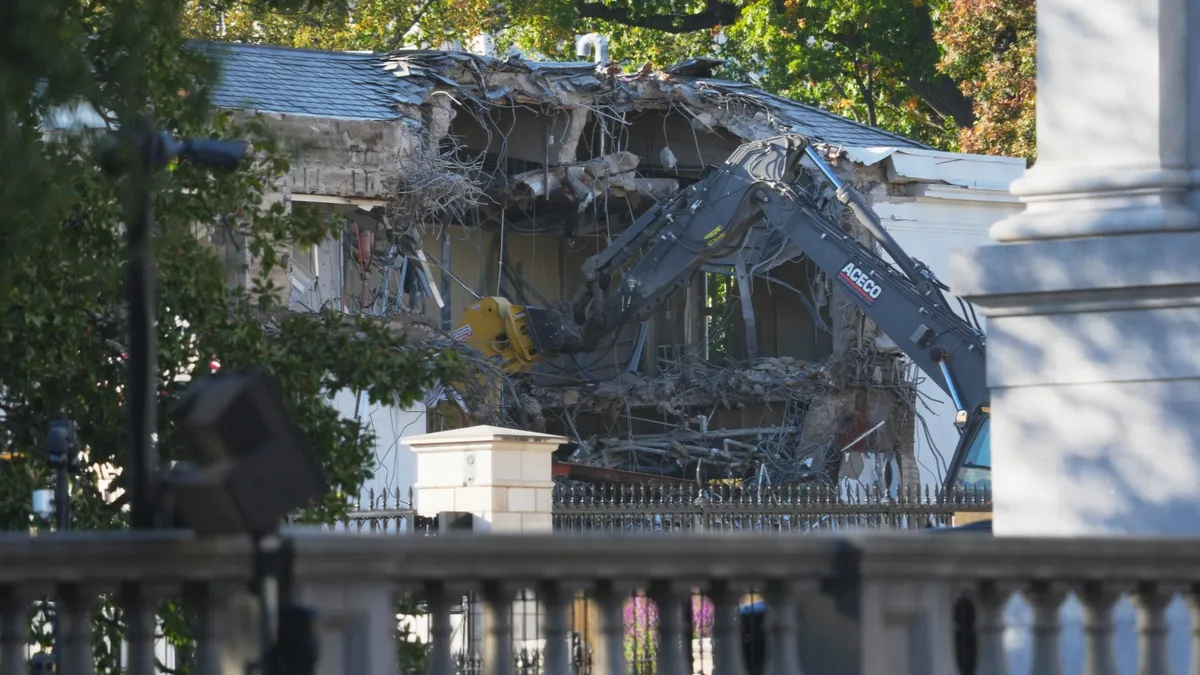
The White House has initiated the demolition of part of the East Wing, traditionally the operational base for the first lady, to pave the way for President Trump's ambitious $250 million ballroom project. This action has raised eyebrows as it commenced without the necessary approval from the federal agency overseeing such construction projects. Dramatic images from the site reveal construction equipment tearing into the East Wing's façade, with shattered windows and debris scattered across the ground. Observers, including reporters, watched closely from a nearby park adjacent to the Treasury Department.
President Trump publicly announced the commencement of this construction project via social media while hosting the 2025 college baseball champions, Louisiana State University and LSU-Shreveport, in the East Room. He remarked on the ongoing construction by stating, "We have a lot of construction going on, which you might hear periodically," before adding, "It just started today." This announcement underscores the scale of the project, which aims to enhance the functionality of the White House.
Despite the significant nature of the construction, the White House has proceeded without the official sign-off from the National Capital Planning Commission (NCPC), which is responsible for approving construction and major renovations to government buildings in the Washington area. Will Scharf, chairman of the NCPC and a senior aide to Trump, stated during the commission's September meeting that they do not oversee demolition or site preparation for federal properties. "What we deal with is essentially construction, vertical build," he explained. As of now, it remains unclear whether the White House has submitted the ballroom plans for the NCPC's review.
As construction progresses, the White House press secretary, Karoline Leavitt, confirmed that the offices located in the East Wing will be temporarily relocated. She emphasized that the East Wing will undergo modernization and renovation, assuring the public that "nothing will be torn down." This renovation effort reflects a commitment to preserving the historical integrity of the East Wing, which was originally built in 1902 and has seen various updates, including a second story added in 1942.
President Trump has articulated a vision for the new ballroom, claiming that it has been a long-desired addition for U.S. presidents over the past 150 years. The planned 90,000-square-foot ballroom, characterized by its glass walls, aims to alleviate the limitations of the current East Room, which accommodates approximately 200 guests. Trump has expressed a preference for hosting dignitaries in a dedicated space rather than in temporary structures on the South Lawn.
In his social media announcement, Trump asserted that the ballroom project would incur "zero cost to the American taxpayer," as it is being financed through private donations from "many generous Patriots, Great American Companies, and, yours truly." He revealed that the ballroom's capacity has expanded from an initially projected 650 seated guests to a staggering 999 attendees, which marks a considerable increase in the scale of the venue.
The White House has indicated that it will eventually disclose the identities of those who have contributed to the ballroom's funding, though specific details have yet to be released. Notably, at a recent dinner for wealthy business executives supporting the project, Trump mentioned that Carrier Global Corp., a major manufacturer of heating, ventilation, and air conditioning systems, has offered to donate the HVAC system for the new ballroom. Carrier confirmed this partnership, stating, "Carrier is honored to provide the new iconic ballroom at the White House with a world-class, energy-efficient HVAC system."
Site preparation for the new ballroom has already begun, which includes clearing trees on the southern grounds. The White House has set an ambitious timeline, with plans for the ballroom to be completed before Trump's term concludes in January 2029, marking a significant transformation of the Executive Mansion. This project represents the most substantial structural change to the White House since the Truman Balcony was added in 1948, emphasizing Trump's commitment to enhancing the legacy of the White House.